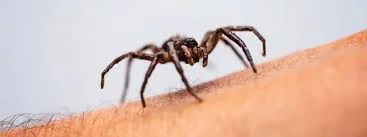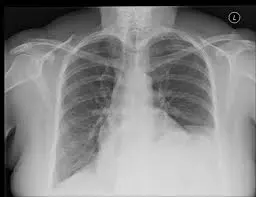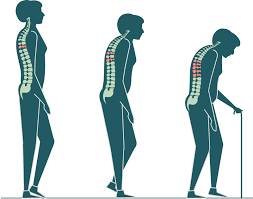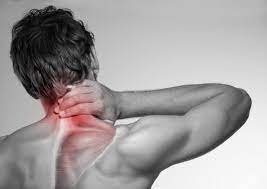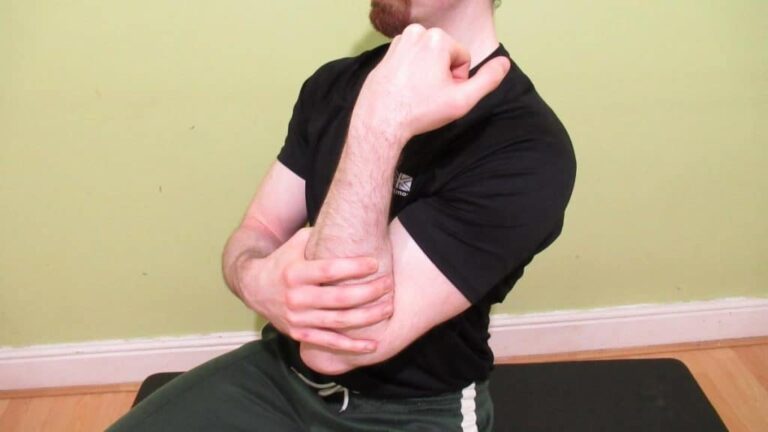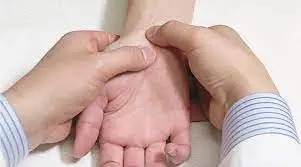Spider Bites Non Poisonus
Table of Contents
Introduction:
- Spiders rarely bite unless they feel threatened, therefore bites are typically not harmful. A spider bite can cause redness, irritation, and swelling, or you may not even notice it at all. Other skin lesions and insect bites also result in swelling, pain, and redness.
- A spider bite’s venom might result in a localized cutaneous reaction. Local swelling, itching, and redness are frequently caused by this. This response will subside over the course of a few hours to a few days. Keep an eye out for the symptoms indicated below as a spider bite can become infected.
It might be challenging to distinguish between a local response to an insect bite or sting and an early infection. Therefore, your doctor might prescribe antibiotics to you. - A spider bite could result in two bite marks on the skin. A few spider bites might cause serious symptoms, but very few are fatal, and the majority of spiders are unable to bite people.
Do most spiders have poison?
- Although there are over 3,500 spider species in the country, the majority are not harmful. Only two species, the widow and the recluse, pose serious medical issues.
- Most spiders that bite can’t penetrate human flesh because their fangs are too tiny or feeble. Numerous spider species produce weak or toxin-specific venoms that are unlikely to harm humans. If they do bite, they could leave red, itchy lesions that recover in about a week.
- Some spiders, however, have the ability to pierce human flesh and inject potent toxins. These spider bites seldom result in death, but they can have negative health effects like severe muscle spasms and tissue destruction.
- Nonpoisonous spider bite symptoms are typically modest and can last anywhere from a few hours to a few days. At the attack location, the following signs could be present:
- Redness
- Swelling
- Pain
- Itching
- When a nonpoisonous spider bite occurs, simple home remedies are frequently sufficient to stop an infection and ease the associated symptoms.
- Most spider bites rarely result in major issues. A filled, painful, and red bite area is possible. Serious spider bites include those from brown recluses, black widows, and hobo spiders. They might result in severe headaches, breathing difficulties, and muscle cramping that need for urgent medical attention. Being bitten by a spider can be avoided.
- Describe the appearance of a spider bite.
- Although a reaction from a spider bite is not always guaranteed, you might see two marks where the fangs punctured the skin.
- If you observe the spider that bit you, it will be simpler to identify the bite, although you might not notice the wound for several hours.
- Look for things like:
- Swelling
- A red welt
- Skin damage
- Any troubling symptoms that accompany the bite
- Other signs and symptoms that a spider bite could cause are:
- Itching or rash
- Pain around the area of the bite
- Muscle pain or cramping
- A red or purplish blister
- Sweating
- Difficulty breathing
- Headache
- Nausea and vomiting
- Fever
- Chills
- Anxiety or restlessness
- Rashes
- Swollen lymph glands
- High blood pressure
- Spider bites may harm skin tissues and have a longer healing time than bites from other insects. The danger of infection can be decreased by keeping the bite clean.
- How harmful is a spider bite?
Most spiders are benign, and they rarely bite humans. All spiders produce venom, a poison, yet the majority of them lack fangs strong enough to pierce human skin.
Arachnids (not insects) include spiders. They belong to the same group as ticks, mites, and scorpions. All of these spiders have eight legs. By eating pests that can ruin crops, spiders serve an essential role.
- Which spider species are harmful to humans?
In America, there are at least 60 different species of spider, but only a few are dangerous to people. These harmful spiders include the following:
Black widows: The bellies of these black spiders feature a crimson hourglass shape. Black widows enjoy creating webs on woodpiles, under eaves, and on fences and outhouses. The majority of the time in the Western and Southern parts of the nation.
Brown recluses: These brown spiders have a black, violin-shaped mark on their heads, and are sometimes known as fiddleback or violin spiders. Brown recluses live in the Midwest and the South. They love sheltered, dry locations with plenty of wood, pebbles, and leaves. Brown recluses seek to the dim corners of attics, closets, and shoes indoors.
Hobo spiders: The bellies of these brown spiders exhibit a grey herringbone pattern in the shape of a V. They construct funnel-shaped webs in damp, dark basements, window wells, crawl spaces, and woodpiles. Mostly found in the Pacific Northwest are hobo spiders.
How frequent are spider bites?
The number of annual spider bites is unknown to experts. You might not always be aware that a spider bit you. Or you might believe a bug, not a spider, bit you.
The elderly (who may be fragile or in poor health) and children (because of their small stature) are the groups most at risk from brown recluses or black widow bites. Less than three Americans per year pass away from a spider bite in the United States. The majority of these fatalities involve minors.
- Who could be bitten by a spider?
Anyone who mistakenly comes in contact with a spider runs the risk of getting bitten by it. However, some people may be in more danger than others because of their jobs or other activities that bring the spider habitat closer to them. Those who are at risk are:
Outdoor workers, including landscapers, groundskeepers, and farm workers.
kids who enjoy climbing on rocks or mounds of leaves
Hikers
Janitors
Machine operators
If you believe one of the following species has bitten you, you should always seek medical attention:
- Brown recluse
- Black widow
- Hobo spider
- Tarantula
- Brazilian wandering spider
Find out here where to find them and how they look.
Brown recluse
The Loxosceles, or recluse, family of spiders includes the brown recluse. Similar to the brown recluse, brown spiders have bodies that are about a third of an inch long.
Although brown recluse spiders are often not hostile, they can bite if they are pinned up against someone’s skin. They often remain concealed in isolated, dark areas. The dark marking on its back has earned it the nickname “violin spider.”
- Typically, the brown recluse can be found in places like:
- Missouri
- Tennessee
- Kansas
- Arkansas
- Louisiana
- Oklahoma
- Eastern Texas
- The brown recluse bite may be painless at first, but it will itch, hurt, and turn red within 2 to 8 hours. Around the bite, a crimson or purple ring that looks like a target or bull’s eye will form.
- Without treatment, the bite may cause blistering, worsen over time to the point where it may damage nearby tissue, and result in fever, chills, and headache.
It can occasionally lead to:
- Coma or seizures
- Jaundice
- Blood in urine
- Kidney failure
- A brown recluse bite has no known cure, however, keeping the area clean can promote quicker recovery.
- After looking at the bite, your doctor will recommend antibiotics. When tissue dies, a patient may require surgery and a stay in the hospital.
- How is a brown recluse spider bite treated?
Black widow
- The Latrodectus (widow) family of spiders includes the black widow spider. It has a characteristic reddish hourglass-shaped mark on its belly and is glossy and black. About half an inch long makes up the body.
- The black widow is a common resident of the warm Southern and Western regions of the United States and prefers to stay in remote areas like:
- Piles of fallen leaves
- Woodpiles
- Boxes in the attic
- The only toxic black widow is the female. Although black widow bites can feel like a tiny pinprick or nothing at all, your skin will react right afterward. The two puncture wounds will be visible on your skin.
After an hour of using a reliable source, you may start to see the:
Muscle cramping
Pain and burning at the puncture site
Headache
High blood pressure
Increased saliva and sweating
Nausea and vomiting
Numbness
Restlessness
Early intervention is crucial, especially for kids and elderly people. Antivenom may be recommended by a physician.
- How do black widow spider bites affect the individual who is bitten?
Hobo spider
- In the Pacific Northwest, hobo spiders are widespread. Their bodies range in length from half an inch to three-quarters of an inch. They stand tall, have long legs, and move quickly.
- Incited hobo spiders are capable of biting.
- When cleaning, use caution:
- Behind furniture
- Under baseboards
- In closets
- A hobo spider bite may go unnoticed at first, but it may soon leave you with pain and paralysis.
- The area will start to turn red after an hour. It will stiffen and swell in 8 hours. The wound may start to leak fluid after 24 to 26 hours and eventually turn black.
Other warning signs and symptoms could be:
The puncture site has a red or purple blister
Visual or aural disruption
Weakness
Joint pain
Headaches
Nausea
Sweating
Bites from hobo spiders recover gradually. If you believe a hobo spider has bitten you, get emergency medical attention.
- Similar to how brown recluse spider bites are treated. It could involve the following:
Corticosteroids
Antibiotics
Surgery
Within 24 hours of the bite, treatment is most effective.
- What other information is pertinent to a hobo spider bite?
Tarantula
- In states with arid temperatures in the southwest and as far east as the Mississippi River, tarantulas can be found. They frequently cover under:
- Logs or stones
- Tree trunks
- In tunnels or burrows
- In the United States, pet tarantulas are the source of the majority of tarantula bites.
- Tarantulas can typically be recognized by their look.
They have acquired:
- A body that is 1.5 to 2 inches long with a hairy texture and hanging fangs
- The tarantula is not hostile. The venom of the species that are native to the United States is not regarded as harmful. Their bite could not hurt at all or hurt like a bee sting. It will turn heated and crimson there.
Additional signs and symptoms that could manifest hours or even days later include:
Rash
Swelling
Itching
Rapid heart rate
Eyelid puffiness
Trouble breathing
Low blood pressure
If you connect with any of these symptoms, get help right away.
Brazilian wandering spider
- South and Central America are the original home of the Brazilian wandering spider. It moves swiftly and violently. A wandering spider’s body measures between one-quarter to one and a half inches. It is known as one of the most poisonous spiders in the entire globe.
- Brazilian wandering spider bites cause excruciating discomfort. It can rapidly produce drooling and excessive perspiration. Typically, the area around the bite will expand, turn red, and become hot.
- In extreme circumstances, the bite may cause dead tissue or even death.
- Get help right now if you need it. If this spider bites you, there is an antivenom available.
Wolf spider
- Wolf spiders, which are widespread throughout the nation and have a body length of one-quarter to one-and-a-third inches, resemble tarantulas in appearance. They enjoy hunting on the ground so they can stalk their prey.
- Where to locate them:
- In sand and gravel
- Around the bases of doors and windows
- In house plants
- They have six smaller eyes surrounding two larger eyes in the center of their faces
- The bite of a wolf spider can shred the skin and result in discomfort, redness, and edema. As a result of the bite, you can also develop enlarged lymph nodes.
- Some people’s recovery times can reach ten days. The bite can occasionally cause tissue injury.
- What should you know before getting bitten by a wolf spider?
Jumping spider
- The jumping spider is one of the most widespread domestic spiders in the country. It is about one-half and three-quarters of an inch long, with a thick, hairy body.
- The most typical kind has tops that are black with white dots. It transitions between sites in an unpredictable manner via jumping. It’s most likely to be found outside in gardens and close to other types of vegetation.
- Typically, a wasp sting is no worse than a jumping spider bite. If you are allergic to spider venom, it could be dangerous.
Serious signs incorporate:
Pain
Itching
Redness
Swelling
Headaches
If threatened, they’ll attack, so wear gloves when gardening.
Camel spider
- The camel spider, which is sand-colored and inhabits arid environments, possesses a formidable pincer on its head. They appear in the central
- West Coast of the United States and southern Mexico.
- A camel spider always looks for the coolest spot, which can be your shadow. A quick runner (up to 10 mph), some can reach lengths exceeding 2 inches.
- A camel spider’s powerful jaws can produce a sizable wound in human skin. Although these spiders don’t bite, an open wound could cause an infection.
- Additionally, you can feel minor to severe bleeding as well as edema surrounding the bite wound.
Spiders can be found indoors, outdoors, in yards, and at work.
Here are some recommendations to lessen your chance of getting bitten by a spider:
- Know how to recognize poisonous spiders in your location
- Be cautious when disturbing objects or areas that have not been disturbed in a while, such as a log pile or an attic, whether you are working outside in the yard, hiking, camping, or at home.
- Be cautious when moving anything or anything that hasn’t been moved in a while, like a pile of logs or an attic.
- Before using any clothing, footwear, or equipment, check it or shake it out, especially if it is kept in a shed or outhouse.
- When working in the yard or going on treks, put on protective apparel such as long sleeves, gloves, and so forth.
- Maintain a debris-free yard, and if at all feasible, make sure you have a tetanus shot every 10 years.
Symptoms and Causes:
- What signs indicate a spider bite?
- Depending on the kind of spider, different symptoms can result from a bite.
- A black widow spider bite causes immediate, excruciating, and pinprick-like pain. After that, the bite site goes numb. An additional indication of a black widow spider bite is:
- Difficulty breathing
- Droopy or swollen eyes
- Headache
- Increased saliva production
- Nausea and vomiting
- Abdominal stiffness and painful muscle cramps in shoulders, chest, and back
- Profuse sweating
- Itchy skin rash
- Brown recluse spider bites don’t usually hurt or make themselves known right away. Instead, you might feel pain for an hour following the bite. An additional indication of a brown recluse spider bite is:
- A bruising or reddish skin tone surrounding a bull’s-eye-shaped blister. If the blister bursts, it may cause a skin ulcer that eventually scars.
Body-wide itching or itchiness at the bite site - Rarely do hobo spider bites hurt. Hobo spider bite symptoms include:
- Headache that lasts for hours or minutes after the bite. For a week, the discomfort can last.
- 30 minutes after the bite, the bitten site’s skin toughened.
- Bruised, rosy skin
- Pimples that ooze pus
- Fatigue
- Nausea
- Cognitive dysfunction (memory issues)
Diagnosis and Tests:
How are spider bites identified?
- The easiest way to determine a bite and the type of spider is to actually see it. Without this, it is impossible to detect a spider bite or figure out who or what bit you.
- A diagnosis may be made by your doctor based on your symptoms. In order to check for skin infections that cause comparable symptoms, such as methicillin-resistant Staphylococcus aureus (MRSA), your doctor may also send a sample of blister fluid to a lab.
Complications:
What side effects might a spider bite result?
- Some skin ulcers (wounds) are brought on by brown recluse bites. You may require surgery if the wound doesn’t heal on its own.
- The most dangerous bites come from black widows. Those under the age of 16 and those over 60 may require hospitalization to treat:
- Breathing difficulties
- Heart problems
- Elevated blood pressure
- Severe cramping and aching muscles
Treatment of Spider Bites Non Poisonus
- How should a spider bite be taken care of or treated?
Treatments for spider bites differ based on the symptoms. Muscle relaxants, sedatives, and pain relievers are used in the treatment of black widow spider bites.
Bites from hobo and brown recluse spiders can be treated with:
- To stop infection, regularly clean with a povidone-iodine solution.
- Three times a day, soak the bite site in a sterile saltwater (saline) solution.
In the unlikely scenario that a spider bites me, what should I do?
Venom from a spider bite should never be extracted or suctioned out. Instead, take these actions:
- Use soap and warm water to wash the bite site.
- Apply an ice pack or a cool, moist washcloth to the bite region.
- Lift the bite site.
- To reduce itching and swelling, take an antihistamine (allergy medication).
- For discomfort and swelling, take an over-the-counter pain medication.
- Immediately seek medical attention if your symptoms are serious.
Whenever to visit a doctor
If you think a spider bite may have affected you or someone else, always seek medical assistance.
Call 911 If the individual has:
- An allergic reaction, even if the symptoms don’t seem to be an allergic reaction, such as hives, swelling, and breathing issues.
- Severe or quickly worsening pain, swelling, or other symptoms, including cramps, fever, loss of consciousness, or other symptoms.
- Try to take a photo of the spider if you encounter it in case you need to subsequently present it to a doctor for identification.
- If it has been more than ten years since your last booster, you might require one. Reliable Source.
- Within 24 hours of being bitten, get medical attention for a spider bite for the best results.
Treatments at home for spider bites
Spider bites can occasionally be treated at home. Follow these steps if a nonvenomous spider bites you:
- For 10 minutes at a time, alternately place an ice pack on and off the bite. Ice or an ice pack should always be covered with fabric.
- Lift the affected area to lessen swelling.
- To relieve itching, take an antihistamine, such as diphenhydramine (Benadryl).
- Use soap and water to thoroughly clean the area to avoid infection.
- If blisters appear, apply antibiotic cream to the affected region.
- If you have symptoms of a spider bite or if they don’t go away after some time, see a doctor.
Prevention:
- How can I protect myself against getting bitten by spiders?
For yourself and your loved ones, prevent getting bitten by spiders by:
- Use registered insect repellent with the Environmental Protection Agency (EPA).
- Keep firewood outside and check it for spiders before bringing it inside.
- Shake your gloves, caps, and shoes to check for spiders before putting them on.
- On your clothing and shoes, apply permethrin, an insecticide.
- When moving rocks, carrying wood, working in the garden, or going anywhere else outside, wear gloves.
- In woodland areas, put on long sleeves and trousers.
Prognosis / Outlook
- What is the prognosis (prospect) for those who have been bitten by spiders?
Mild symptoms like pain and swelling are what most people with spider bites experience. These symptoms gradually go away with at-home treatment.
If a black widow, brown recluse, or hobo spider bites you, the symptoms may be more painful and severe. Most victims of deadly spider bites recover with the aid of competent medical care.
- How can a spider bite be avoided?
Living with:
- When should I make a doctor’s appointment?
Contact a medical expert straight away if any of the following happen:
- Difficulty breathing.
- Palpitations in the heart, a rapid heartbeat, or other cardiac issues.
- Nausea and vomiting.
- Severe muscle pain, cramps, weakness, or paralysis.
- Fever or yellow discharge from the bitten site are symptoms of infection.
- Vision problems or severe headaches.
What inquiries should I make of my physician?
Ask your doctor the following questions if you have worries about a spider bite:
- What therapy is most effective for my symptoms?
- How can I avoid being bitten by spiders again?
- Are You susceptible to additional issues?
- Should I keep an eye out for complications?
IMPORTANT NOTE:
Despite their unfavorable reputation, spiders actually serve a useful purpose by lowering the population of insects that could harm crops and the environment. Really, spiders don’t want to bite you. Only when cornered or feeling the need to defend themselves do they bite. Most bites from spiders are not harmful. Your doctor may make recommendations for treating symptoms at home. If a black widow, brown recluse, or hobo spider bites you, get medical help right away.
Summary
In the United States, the majority of spider species won’t bite a person. Their teeth can’t pierce skin because their mouths are too small and weak. Some do bite, but their toxins aren’t potent enough to give humans a bad reaction.
Some spiders, like the black widow and the tarantula, may hurt people quite badly with their bites. If a spider bite causes a serious reaction, you should get medical attention right away.
FAQs
The majority of spider bites are innocuous, and any symptoms disappear within a few days. If you believe a black widow or brown recluse spider bit you, get medical help right away. Seek immediate medical attention if your symptoms are life-threatening, the bite gets worse, or you experience an allergic response.
A bite from a brown recluse spider won’t be immediately felt because it doesn’t hurt.
If you’ve been bitten or stung and there is a lot of swelling, blistering, or pus, which denotes an infection, you should visit your doctor. If you encounter any of these signs following a bite or sting, call 999 and request an ambulance: wheezing or breathing issues. diarrhea, vomiting, or nausea.
Symptoms will appear 30 minutes to two hours after the bite. Severe back discomfort is one symptom that can occur. muscle pain.
The majority of the time, venomous spiders won’t bite you unless they feel threatened or provoked. The majority of spider bites in India are not thought to be dangerous to people.
Following are the steps involved in spider bite first-aid:
To clean the wound, use mild soap and water.
The bite should be covered with a cool compress for 15 minutes every hour.
Elevate the affected region if at all possible.
As needed, take an over-the-counter painkiller.
Even while some bites hurt like a sting, you might not always be able to tell if a spider bit you. Two puncture wounds could be visible on the skin. Depending on the type of spider, there may be a reaction in some instances immediately or over a period of time.
For instance, a wolf spider bite can shred the skin and produce discomfort, redness, and edema. Jumping spider bites can hurt like a wasp sting, and those who are allergic to them may react.
Depending on the species of spider, common symptoms include: Reliable Source
Itching, pain, and a rash
Muscle pain or cramps
Sweating, fever, and chills
Breathing problems
Anxiety
High blood pressure
For instance, you might not immediately feel pain or itching after being bitten by a brown recluse spider, but it might take many hours. Reliable Source. Black widow spider bites may feel like a pinprick at the time, but puncture marks will be evident, and additional symptoms, such as muscle cramps and a fever, are likely to follow.
The spider will determine this. Some spider bites have an instantaneous impact. While some induce instant pain and swelling, others are painless at the time. Some deadly spider bites may take several hours to show symptoms. After 2 to 8 hours, a brown recluse spider bite may cause a reactionReliable Source. A black widow spider bite typically causes cramping and other symptoms to appear within an hour. Even though a tarantula bite may not hurt, symptoms may not show up for several hours or even days.
Spider bites frequently resemble other bug bites, but occasionally there will be two puncture marks. Depending on the spider, additional reactions could manifest as swelling, pain, fever, and other symptoms.
Squeezing a spider bite won’t assist in lowering the likelihood of symptoms, but it could spread any infection or poison. Instead, cleanse the area with soap and water and, if possible, keep it elevated. To minimize swelling, apply a wet towel, and then get help as soon as you can.
References:
1 Spider Bite, Non-Poisonous. (n.d.). Default. https://mountnittany.org/wellness-article/spider-bite-nonpoisonous
2 Spider bites – Symptoms & causes – Mayo Clinic. (2021, July 30). Mayo Clinic. https://www.mayoclinic.org/diseases-conditions/spider-bites/symptoms-causes/syc-20352371
3 Nonpoisonous Spider Bites. (n.d.). https://www.columbiadoctors.org/health-library/article/nonpoisonous-spider-bites/
4 Professional, C. C. M. (n.d.). Spider Bites. Cleveland Clinic. https://my.clevelandclinic.org/health/diseases/16639-spider-bites
5 Story, C. M. (2023, March 9). How to Identify and Treat Spider Bites. Healthline. https://www.healthline.com/health/spider-bites

